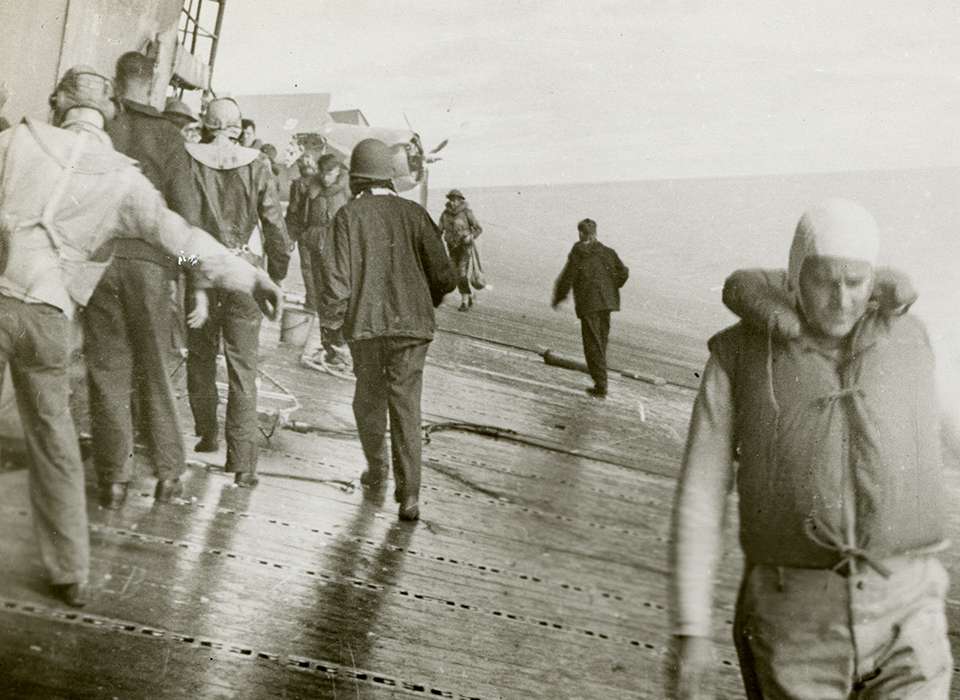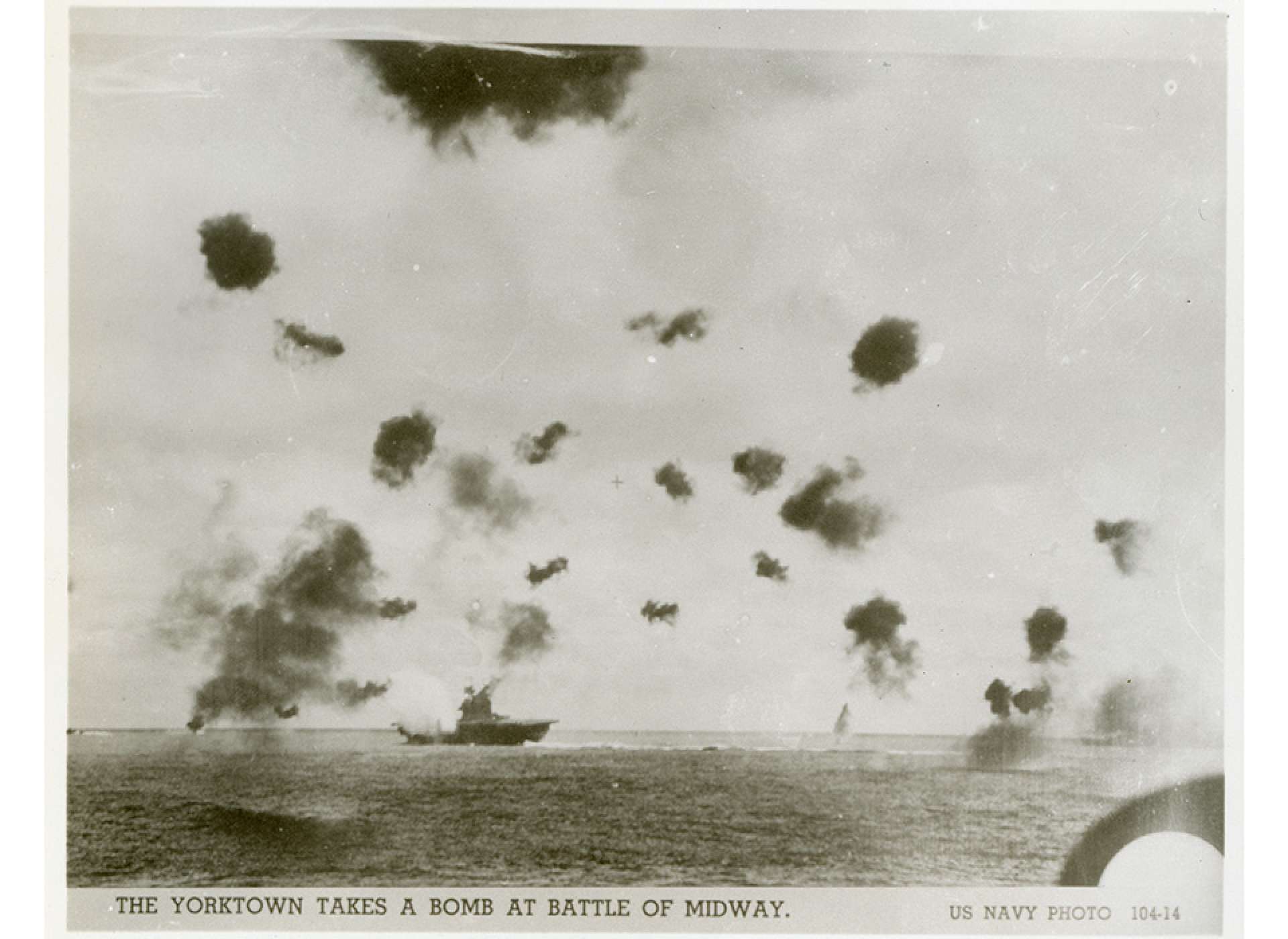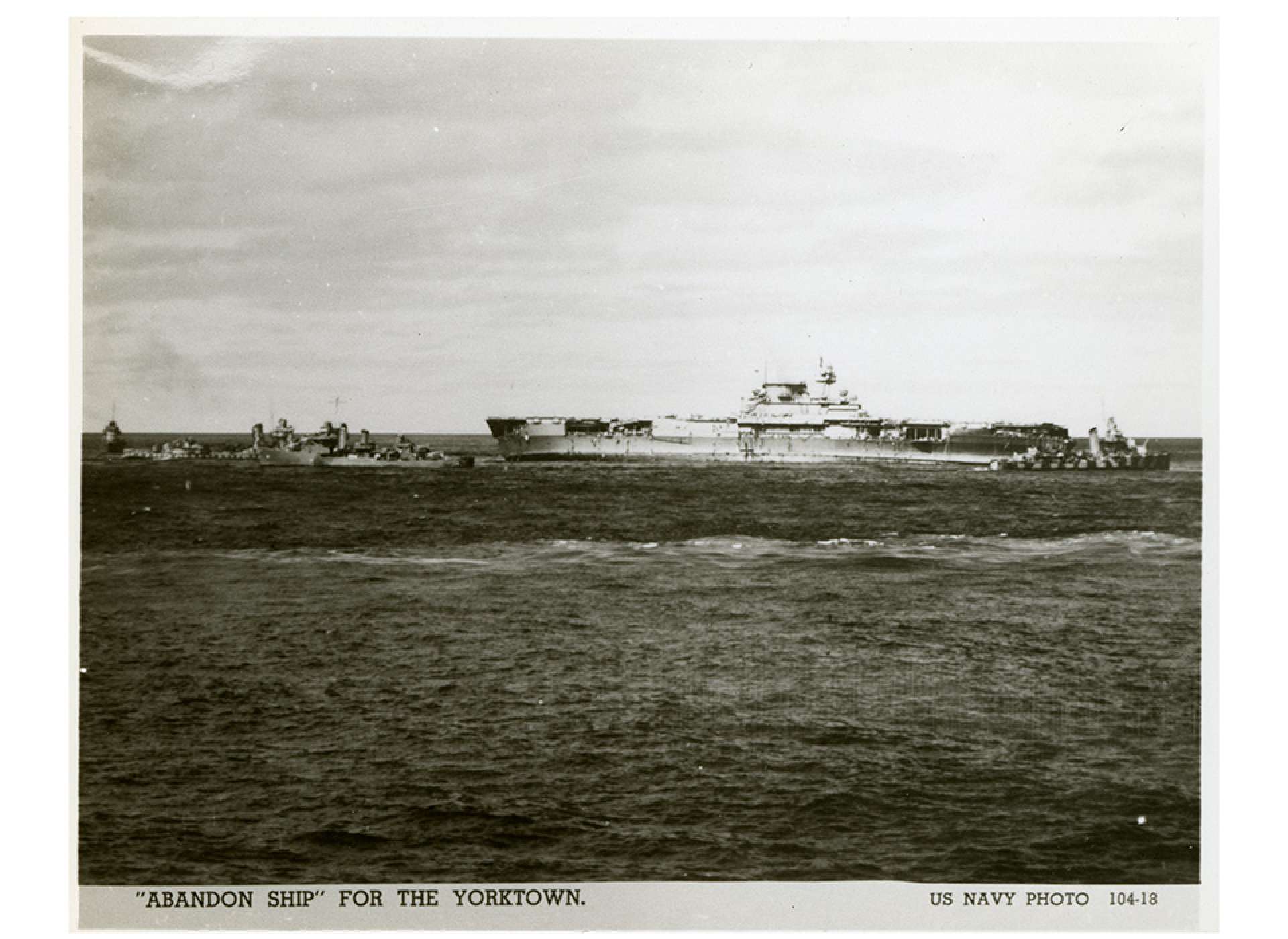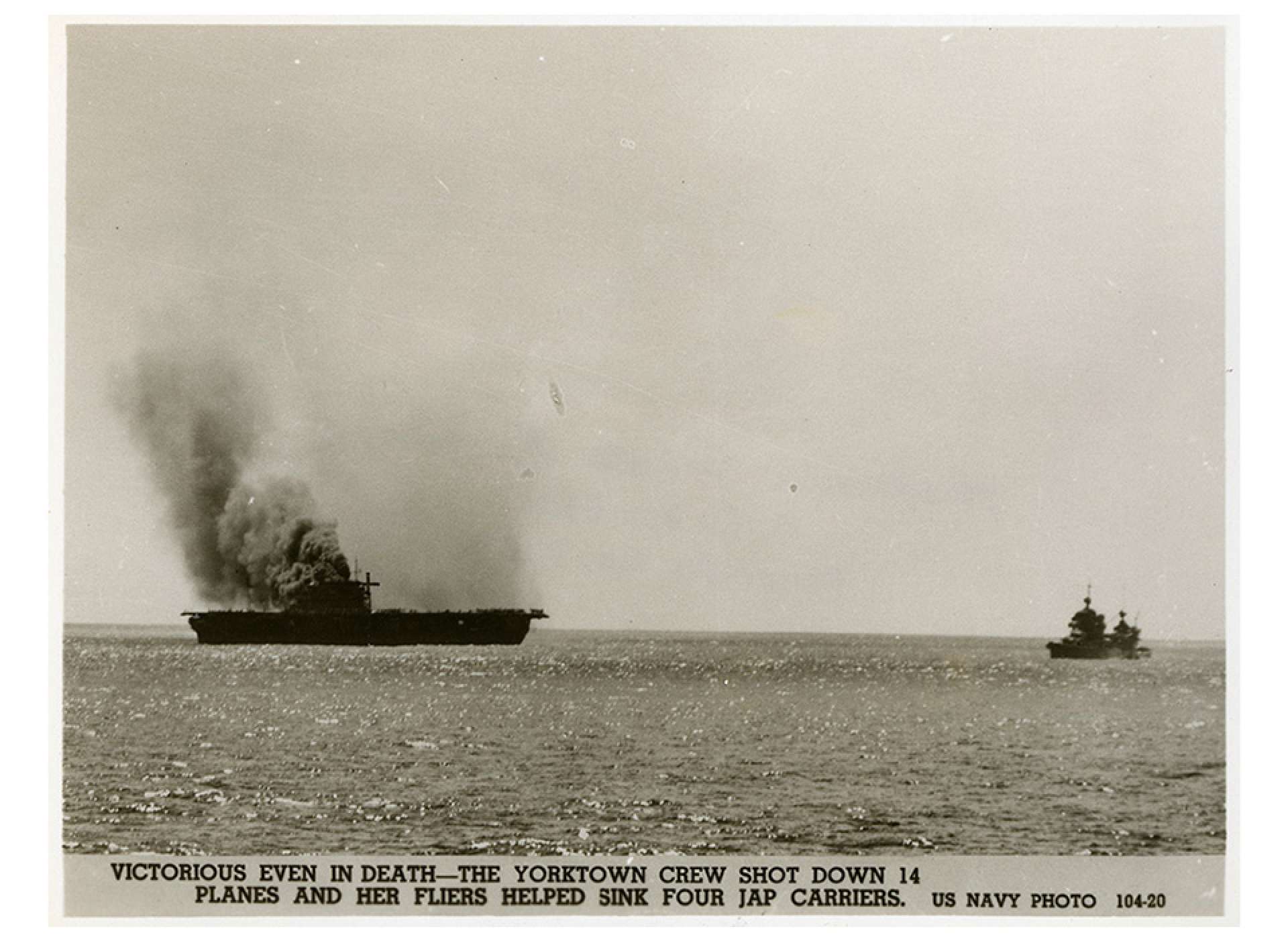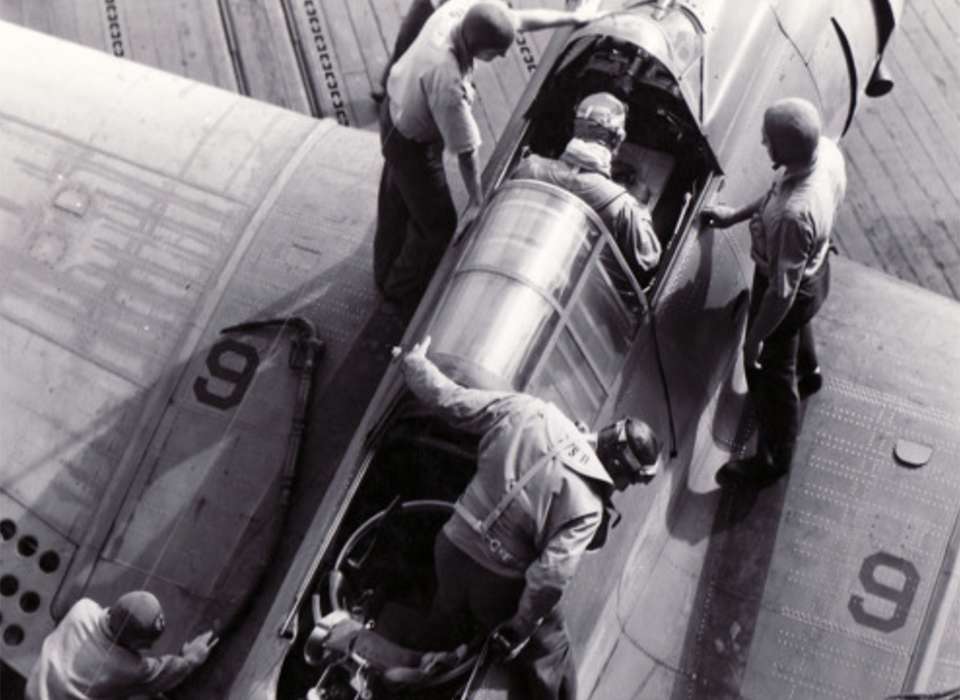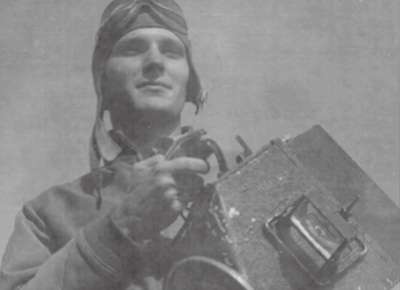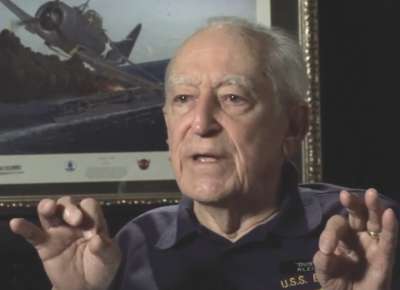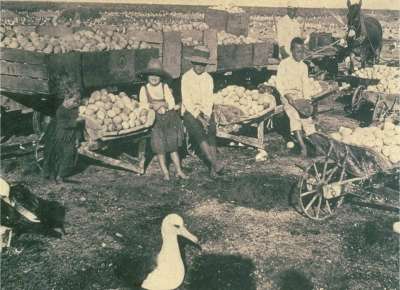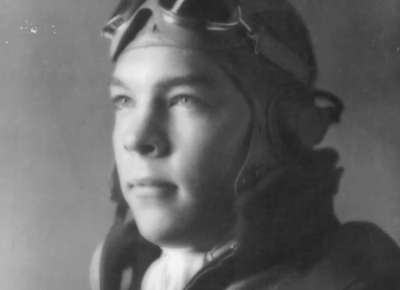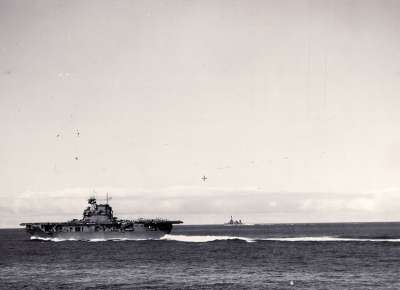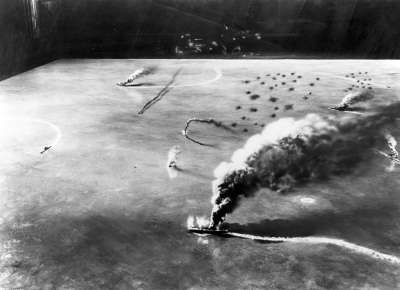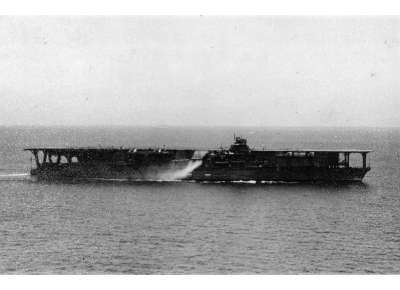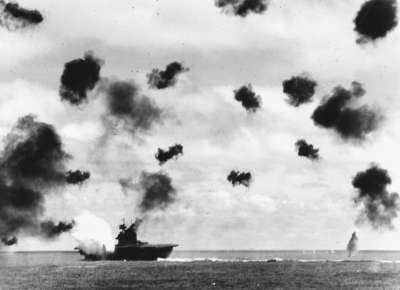Top Image: Last minutes on damaged USS Yorktown (CV-5). Midway Islands, June 1942. From the Collection of The National WWII Museum, Gift in memory of Sgt. Lyle E. Eberspecher, 2013.495.396.
Remember the 80th Anniversary of Midway
Midway: Leadership and Legacy
A roundtable discussion featuring Jonathan Parshall, Trent Hone and Craig Symonds
Available Jun 3, 2022
To commemorate the 80th Anniversary of the Battle of Midway, the Museum is honored to host a distinguished panel of three leading naval historians and experts on this pivotal battle. Hosted by the Museum’s Jenny Craig Institute for the Study of War and Democracy, this roundtable will go beyond the traditional recounting of the course of the battle, as the scholars dive deeper, looking at the leaders who were instrumental in the action and outcome, as well as the legacy and importance of the battle.
The Panel
Trent Hone is an authority on the US Navy of the early twentieth century and a leader in the application of complexity science to organizational design. He studied religion and archaeology at Carleton College in Northfield, MN, and works as a consultant helping a variety of organizations improve their processes and techniques. Mr. Hone regularly writes and speaks about leadership, sense-making, organizational learning, and complexity. His talents are uniquely suited to integrate the history of the Navy with modern management theories, generating new insights relevant to both disciplines.
Jonathan Parshall saw his interest in the Imperial Japanese Navy develop early in his childhood. As an adult, that passion led him to create the foremost website devoted to the Imperial Navy, combinedfleet.com, which he founded in 1995. Parshall’s book, Shattered Sword: The Untold Story of the Battle of Midway, coauthored with Anthony Tully, is the definitive account of that pivotal battle in the Pacific. He has written for the Naval War College Review, the US Naval Institute’s Proceedings and Naval History magazines, World War II Magazine, Wartime (the journal of the Australian War Memorial), Flypast magazine, the Sankei Shimbun, and several overseas aviation publications. He has also illustrated numerous books on the Pacific war (including his friend Richard Frank’s MacArthur).
Craig L. Symonds is Professor Emeritus at the US Naval Academy, where he taught naval history for 30 years, including four years as History Department Chair. He also taught at Britannia Royal Naval College in Dartmouth, England. From 2017 to 2020 he was the Ernest J. King Distinguished Professor of Maritime History at the US Naval War College. He is the author of 17 books, including Decision at Sea, Lincoln and his Admirals, The Battle of Midway, Neptune: The Allied Invasion of Europe and the D-Day Landings, and, most recently, World War II at Sea: A Global History. His works have been translated into several languages and received numerous awards, including the Lincoln Prize, the Roosevelt Prize, and the Dudley Knox Medal for Lifetime Achievement.
Overview
A major goal for Japan during World War II was to gain territory in East Asia and Southwest Pacific, effectively removing the United States as the dominate power. Japanese military planners hoped to defeat the US Pacific Fleet and take Midway, from which they could launch additional attacks on Pearl Harbor. This, they believed, would secure their dominance in the area and force the United States to negotiate for peace.
Part of the Northwestern Islands of the Hawaiian archipelago, Midway Atoll is one of the most remote atolls located more than 3,200 miles from San Francisco. The United States annexed the atoll in the nineteenth century, and by 1940 had begun constructing facilities on the islands in preparation for war. On December 7, 1941, Japanese destroyers shelled the facilities at Naval Air Station Midway. By June 1942, PBY Catalinas and B-17s were stationed on Midway, along with 4,000 American personnel.
The five-day battle, fought from June 3-7, 1942, encompassed an area the size of the contiguous United States. Japanese and American ships fought at ranges of 50-150 miles apart.
Breaking the Code
In early 1942, Navy cryptanalysts had begun breaking Japanese communication codes, and had become learned of Japanese plans to attack a location in the Pacific referred to as “AF.” To determine what AF meant, a simple trick was used: American forces at Midway were told to send out a false message that they were running low on fresh water. After the message was sent, cryptanalysts deciphered a Japanese message that AF was short on water. With the confirmation that AF was Midway, Station Hypo in Hawaii, decoded further messages, providing the US Navy with the date of the attack, and the Japanese order of battle. With this vital information at hand, Admiral Chester Nimitz prepared US Naval forces to counterattack.
Opening Strikes
On June 3, 1942, a PBY flying a scouting patrol out of Midway discovered part of the Japanese Midway Occupational force southwest of the atoll. Throughout the day, additional sightings were made, but the Japanese carrier force was not located. B-17s and PBYs from Midway make attacks on the sighted force, but with minimal results. Heavy anti-aircraft fire kept the crews from remaining in the area to determine the affects of the attack, but a heavy cruiser and one transport were reported as hit, along with a second cruiser, likely hit on the stern. That night, four PBY-5As carrying Mark XIII torpedoes carried out the first nighttime torpedo attack by patrol planes on surface ships. Although the results of the attack were indefinite, the small force believed that one or two enemy ships had sustained damage.
The Battle
On the morning of June 4, 1942, aircraft from Japanese carriers attacked and damaged the US base on Midway. The US Marine Corps force stationed on Midway endured devastating losses, but the facilities only suffered minor damage. The US carrier force was to the east of the island and had located the main body of the Japanese force. As the Japanese aircraft returned to their carriers, the Japanese navy became aware that US naval forces were in the area.
From the American carriers USS Yorktown (CV-5), USS Enterprise (CV-6), and USS Hornet (CV-8) TBD Devastator torpedo bombers launched to attack the Japanese force. Drawing out enemy aircraft, they cleared the skies for SBD Dauntless dive bombers from the Enterprise and Yorktown to make an attack, leaving the Japanese carriers Kaga and Akagi fatally damaged and wrecking the carrier Soryu. The only surviving Japanese carrier, Hiryu, launched two waves of attacks against the American carriers, bombing Yorktown. Severely damaged, the ship’s crew fought to keep the carrier afloat. Dauntlesses from Enterprise struck the Hiryu in the early evening, striking a fatal blow against the fourth and final Japanese carrier off Midway.
On June 5, Rear Admiral Spruance pursed the Japanese fleet to the west with his task force as the Japanese were forced to scuttle Akagi and Hiryu. The crew of Yorktown continued to fight to save the damaged carrier. On June 6, the final aerial attacks took place. Dive bombers (SBDs) from Enterprise and Hornet inflicted sever damage on the Japanese fleet, sinking the heavy cruiser Mikuma, and damaging three other ships. Salvage operations on Yorktown were interrupted by a Japanese submarine, which torpedoed the carrier and the destroyer USS Hammann (DD-412). On June 7, Yorktown rolled and sank at dawn.
-

Smoke rising from an explosion on the USS Yorktown (CV-5). From the Collection of The National WWII Museum, Gift in memory of Sgt. Lyle E. Eberspecher, 2013.495.391.
-

Heavily damaged USS Yorktown (CV-5). From the Collection of The National WWII Museum, Gift in memory of Sgt. Lyle E. Eberspecher, 2013.495.395.
-

Distant view of smoke rising from the aircraft carrier USS Yorktown (CV-5). From the Collection of The National WWII Museum, Gift in memory of Sgt. Lyle E. Eberspecher, 2013.495.397.
Episode 105: Midway
On the Museum’s Service on Celluloid podcast, a panel of historians review WWII films both old and new for historical accuracy. In this episode, they take aim at Midway (1976), featuring Charlton Heston, Henry Fonda, and Hal Holbrook, among others—as well as recycled footage from several previous (and much better) WWII films.
Importance of the US Victory at Midway
The American success at Midway was a major victory over the Imperial Japanese Navy. All four Japanese carriers, Akagi, Hiryu, Kaga, and Soryu, had participated in the attack on Pearl Harbor. Sinking those Japanese carriers represented a resounding defeat over the enemy fleet which had wrought such destruction only six months before. The Imperial Japanese Navy would not be capable of overcoming the loss of four carriers and over 100 trained pilots, and with the loss at Midway, the Japanese offensive in the Pacific was overturned and the United States began offensive action in the Pacific.
US Forces at Midway
Admiral Chester W. Nimitz, USN, Commander in Chief
Rear Admiral Frank Jack Fletcher, USN, Carrier Striking Force
Destroyers: 15
Carriers: 3
Cruisers: 8
Battleships: 0
Aircraft: 360
Submarines: 16
US Casualties at Midway
Destroyers: 1
Carriers: 1
Cruisers: 0
Battleships: 0
Aircraft: 150
Personnel: 307
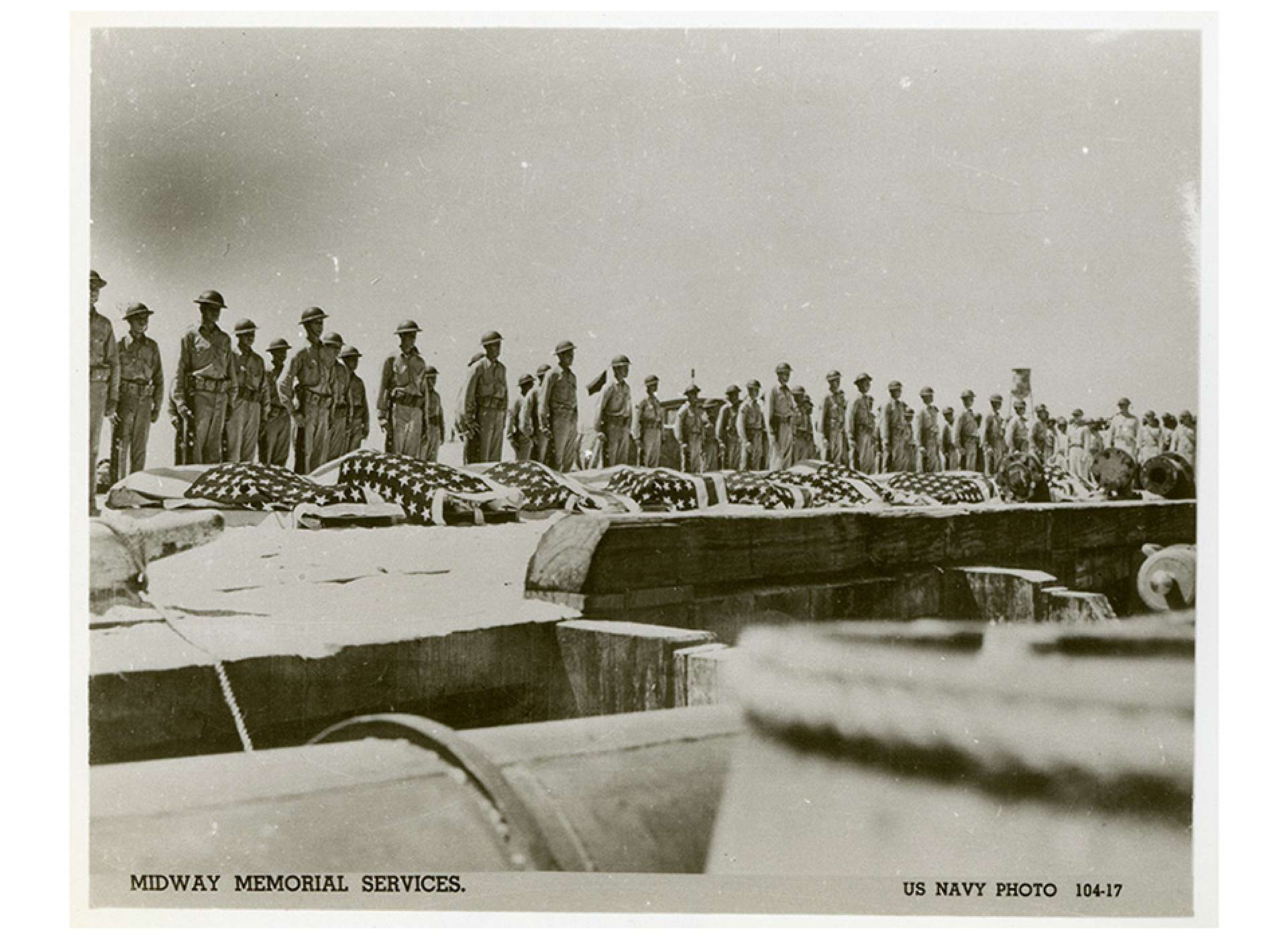
US Navy sailors standing at attention near a line of flag-draped bodies. Midway Islands, Pacific Ocean, June 1942. From the Collection of The National WWII Museum, Gift in memory of Sgt. Lyle E. Eberspecher, 2013.495.394.
Japanese Forces at Midway
Admiral Yamamoto Isoroku, IJN, Commander in Chief
Destroyers: 12
Carriers: 4
Cruisers: 2
Battleships: 2
Aircraft: 276
Submarines: 0
Japanese Casualties at Midway
Destroyers: 1
Carriers: 4
Cruisers: 1
Battleships; 0
Aircraft: 248
Submarines: 0
Personnel: 3,057
